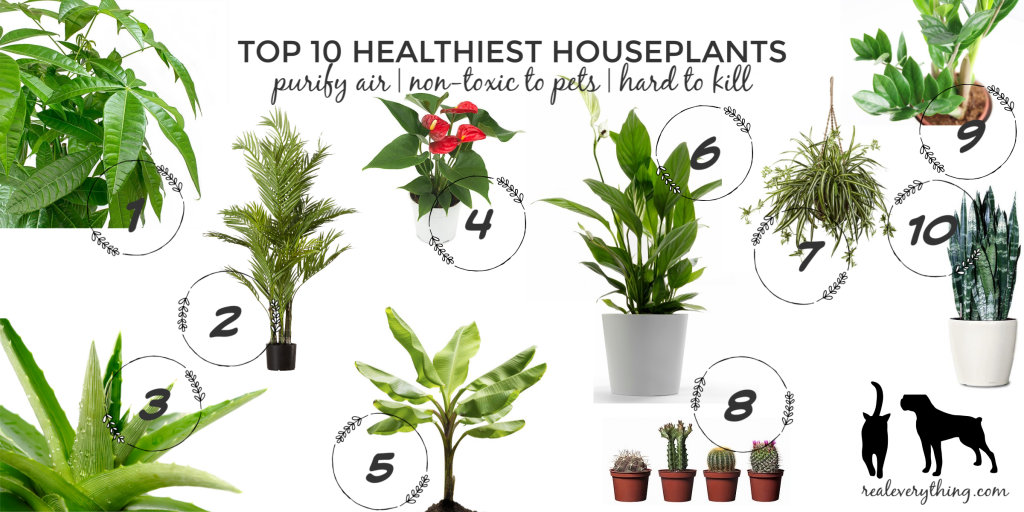As someone who is very mindful about what we bring in the house, I honestly didn’t think we needed an AirDoctor and didn’t expect to experience much of a difference. I was SO WRONG!
Why worry about air quality inside?
Americans spend an average of 90% of their time indoors and the air we breathe is 2 – 5 times more polluted than outdoor air, and in some cases, up to 100 times MORE polluted, according to the EPA (1).
In fact, air pollution is responsible for nearly 7 million premature deaths globally.
Our personal experience is that the house SMELLS better, dog and teens no longer hit you when you walk through the door. And, I love seeing it “kick on” into overdrive when there’s something especially problematic to filter. For us, it purifies the air as we cook with natural gas – reducing toxic load we couldn’t detect ourselves.
What kinds of contaminants are in our home?
AirDoctor filters out 99.99% of dangerous contaminants so your lungs don’t have to. This includes pollutants such as allergens, pollen, pet dander, dust mite, mold spores and even bacteria and viruses that make you sick.
Mold
I’ve heard from people who realized they had mold in their home from using air purifiers. For example, if the purifier starts activating when the humidifier or air vents are turned on.
Molds reproduce by means of tiny spores; the spores are invisible to the naked eye and float through outdoor and indoor air. Mold may begin growing indoors when mold spores land on surfaces that are wet. There are many types of mold, and none of them will grow without water or moisture.
Molds have the potential to cause health problems. Molds produce allergens (substances that can cause allergic reactions), irritants, and in some cases, potentially toxic substances (mycotoxins). Inhaling or touching mold or mold spores may cause allergic reactions in sensitive individuals. Allergic responses include hay fever-type symptoms, such as sneezing, runny nose, red eyes, and skin rash (dermatitis).
Allergic reactions to mold are common. They can be immediate or delayed. Molds can also cause asthma attacks in people with asthma who are allergic to mold. In addition, mold exposure can irritate the eyes, skin, nose, throat, and lungs of both mold-allergic and non-allergic people. Research on mold and health effects is ongoing. (2)
Smoke
When a person smokes or vapes, they inhale the chemicals in the product. People around the smoker or vaper are also exposed to these chemicals. This exposure is called secondhand exposure. The types and amounts of chemicals these products release vary.
Even after a person stops smoking or vaping, some of the chemicals released can remain indoors for a long time. These chemicals can build up on hard surfaces such as walls, tables and floors, and embed in soft surfaces like clothing, upholstery, drapes, bedding and carpets.
In some cases, these chemicals can be released back into the air, leading to thirdhand exposure. People experience thirdhand exposure when they touch contaminated surfaces or breathe the air where smoking or vaping chemicals are released from surfaces back into the air.
Ventilation, filtration and air cleaning techniques can reduce these exposures, but they will not eliminate them. (3)
Volatile organic compounds
VOCs are found in a wide array of products, at least thousands. Not only do they “off-gas” in your home itself, but they can be transferred via liquids from ground-water contamination that then releases as a gas as well.
Examples include: paints and lacquers, paint strippers, cleaning supplies, pesticides, building materials and furnishings, office equipment such as copiers and printers, correction fluids and carbonless copy paper, graphics and craft materials including glues and adhesives, permanent markers, and photographic solutions.
Exposure to VOC vapors can cause a variety of health effects, including eye, nose, and throat irritation; headaches and loss of coordination; nausea; and damage to the liver, kidneys, or central nervous system. Some VOCs are suspected or proven carcinogens. (4)
Many VOCs are human-made chemicals that are used and produced in the manufacture of paints, pharmaceuticals, and refrigerants. VOCs typically are industrial solvents, such as trichloroethylene; fuel oxygenates, such as methyl tert-butyl ether (MTBE); or by-products produced by chlorination in water treatment, such as chloroform. VOCs are often components of petroleum fuels, hydraulic fluids, paint thinners, and dry cleaning agents.
VOCs are emitted as gases from certain solids or liquids. They include a variety of chemicals, some of which may have short- and long-term adverse health effects. Concentrations of many VOCs are consistently higher indoors (up to ten times higher) than outdoors. And, elevated concentrations can persist in the air long after the activity is completed. (1)
Allergens
Americans spend up to 90 percent of their time indoors, and indoor allergens and irritants play a significant role in triggering asthma attacks. Triggers are things that can cause asthma symptoms, an episode or attack or make asthma worse. If you have asthma, you may react to just one trigger or you may find that several things act as triggers. Be sure to work with a doctor to identify triggers and develop a treatment plan that includes ways to reduce exposures to your asthma triggers:
- Secondhand Smoke
- Dust Mites
- Molds
- Cockroaches and Pests
- Pets
- Nitrogen Dioxide
- Outdoor Air Pollution
- Chemical Irritants
- Wood Smoke
What options are there?
The most affordable option: open your windows!
I also put houseplants in the home, which I wrote more about here.
Beyond that, the EPA suggests either upgrading your HVAC system (expensive!) or use a filtration purifier, like AirDoctor.
The most effective ways to improve your indoor air are to reduce or remove the sources of pollutants and to ventilate with clean outdoor air. In addition, research shows that filtration can be an effective supplement to source control and ventilation.
Using a portable air cleaner and/or upgrading the air filter in your furnace or central heating, ventilation, and air-conditioning (HVAC) system can help to improve indoor air quality. Portable air cleaners, also known as air purifiers or air sanitizers, are designed to filter the air in a single room or area. Central furnace or HVAC filters filter air throughout a home. Portable air cleaners and HVAC filters can reduce indoor air pollution; however, they cannot remove all pollutants from the air. (5)
Similar air purifiers with the same professional features run over $800, but AirDoctor is the first affordable professional quality air PURIFIER that not only removes 99% of particles, but also the vast majority of toxic ozone, VOC, and gasses.
EPA knows indoor air and health.
EPA suggests:
- Ventilate! When outdoor air quality and weather permit, open doors and windows. Run kitchen and bathroom exhaust fans when cooking and showering.
- Consider a high-efficiency air filter for your HVAC system and/ or a portable air cleaner that does not intentionally emit ozone.
- Control indoor moisture to prevent mold. Fix water leaks and keep humidity levels between 30-50% by ventilating or using a dehumidifier if necessary.
- Install and inspect carbon monoxide and smoke alarms.
- Declutter, wipe dust with a damp rag, and vacuum to help reduce asthma triggers, allergens, pests, and pollutants.
Vent Your Combustion Appliances
- Vent all combustion appliances (like wood heaters and gas stoves) to the outside. Combustion appliances like heaters, stoves, and dryers can produce dangerous pollutants in your indoor air.
- Never use a cooking stove to heat indoors and never use a fuel powered generator indoors, even during power outages.
Reduce Chemical Pollution Indoors
- Minimize the indoor use of cleaners, pesticides, perfumes*, and other household and personal chemical products.
*checkout my safer perfume guide here. - Use less toxic cleaning products like mild soap and water. Look for products with EPA’s Safer Choice label.
*checkout my safer cleaning guide here. - Follow product label instructions, don’t mix chemicals, and ventilate when painting, cleaning, sanitizing or disinfecting.
- Use non-chemical methods like integrated pest management whenever possible to manage pests. Avoid using pesticide sprays and foggers.
- Avoid smoking or using e-cigarettes indoors. If you live in multi-unit housing, consider advocating for a smoke-free policy in your building.
- Test your home for lead (before 1978) and radon (if underground). Exposure to radon is the 2nd leading cause of lung cancer in the U.S. (6)
Why did I choose AirDoctor?
AirDoctor uses UltraHepa filter captures particles 100 times smaller than the ordinary HEPA filter. From volatile organic compounds to pollen and allergens, pet dander, dust mite, mold spores and even bacteria and viruses, AirDoctor filters out 99.99% of dangerous contaminants so your lungs don’t have to.
Yes, even viruses – can’t wait to see if we get less sick during the colder months!
We have ours in the center of our home, central to both the kitchen and dining area as well as the foyer where people get their first breath of our home. It’s very quiet and discrete against the wall. That said, we’ve had several guests either ask us about it because they’ve been thinking about their own (yes! I recommend) or because they have one too and love it. We have the:
AirDoctor 3000™️ Powerful purification with an updated filter design for large rooms in your home, including master bedrooms, living rooms, kitchens and more. (630 sq. ft. 4x/hour or 1,260 sq. ft. 2x/hour)
I’ve never heard from a single person that they didn’t like or find AirDoctor effective. Which is why we chose it!
Consumer Rating gives it a 9.8 rating, with cost being the only downfall – and I’ve got a coupon code for you to reduce that!
- Removes 99.99% of bacteria & viruses from the air
- UltraHEPA™ filter—100x more effective than ordinary HEPA
- 3-stage filtration system with 4 fan speeds
- Filters allergens, smoke, chemicals & more
- Air quality sensor & auto-mode filtration
- Covers up to 2400 sq. ft. of space
- Energy efficient
- 30-Day Money Back Guarantee
AirDoctor Code
I actually am not an affiliate nor was I paid to write this review. AirDoctor has partnered with me on the podcast, but because I genuinely love the product I wanted to share it more widely with you here.
AirDoctor comes with a 30-day breathe easy money back guarantee so if you don’t love it, just send it back for a refund, minus shipping.
For up to $300 off, head to airdoctorpro.com and use promo code WHOLEVIEW
And, you will also receive a free 3 year warranty on any unit, which is an additional $84 value!
Sources:
- What are Voliatile Organic Compounds, EPA.gov
- Brief Guide to Mold Exposure and Your Home, EPA.gov
- Secondhand Smoke and Electronic Cigarette Aerosols, EPA.gov
- Volatile Organic Compounds, Minnesota Pollution Control Agency
- Guide to Air Cleaners in the Home, EPA.gov
- Improving Your Indoor Environment, EPA.gov
Want more info on our Real Life? Healthy recipes, parenting tips, and general lifestyle stuff goes out in our Real Everything newsletter, join here.
So never want to miss a post, sale, or deal? Join my Healthy Inside & Out e-mail list for more info on non-toxic living and safer skincare!













